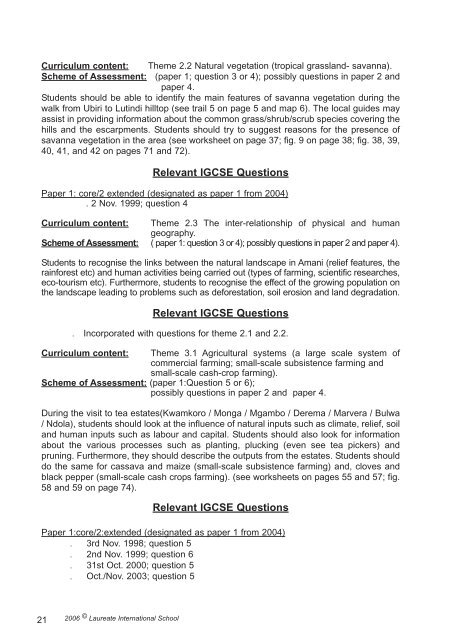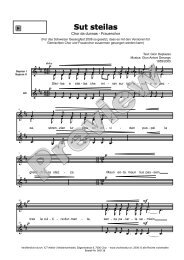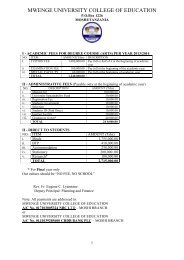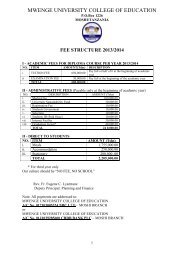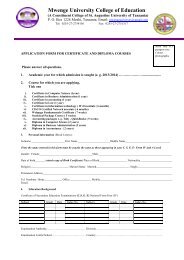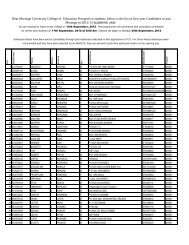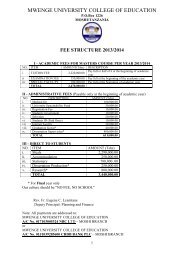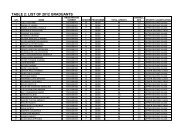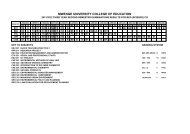preface - Lehrpersonen.ch
preface - Lehrpersonen.ch
preface - Lehrpersonen.ch
You also want an ePaper? Increase the reach of your titles
YUMPU automatically turns print PDFs into web optimized ePapers that Google loves.
Curriculum content: Theme 2.2 Natural vegetation (tropical grassland- savanna).<br />
S<strong>ch</strong>eme of Assessment: (paper 1; question 3 or 4); possibly questions in paper 2 and<br />
paper 4.<br />
Students should be able to identify the main features of savanna vegetation during the<br />
walk from Ubiri to Lutindi hilltop (see trail 5 on page 5 and map 6). The local guides may<br />
assist in providing information about the common grass/shrub/scrub species covering the<br />
hills and the escarpments. Students should try to suggest reasons for the presence of<br />
savanna vegetation in the area (see worksheet on page 37; fig. 9 on page 38; fig. 38, 39,<br />
40, 41, and 42 on pages 71 and 72).<br />
Relevant IGCSE Questions<br />
Paper 1: core/2 extended (designated as paper 1 from 2004)<br />
. 2 Nov. 1999; question 4<br />
Curriculum content: Theme 2.3 The inter-relationship of physical and human<br />
geography.<br />
S<strong>ch</strong>eme of Assessment: ( paper 1: question 3 or 4); possibly questions in paper 2 and paper 4).<br />
Students to recognise the links between the natural landscape in Amani (relief features, the<br />
rainforest etc) and human activities being carried out (types of farming, scientific resear<strong>ch</strong>es,<br />
eco-tourism etc). Furthermore, students to recognise the effect of the growing population on<br />
the landscape leading to problems su<strong>ch</strong> as deforestation, soil erosion and land degradation.<br />
Relevant IGCSE Questions<br />
. Incorporated with questions for theme 2.1 and 2.2.<br />
Curriculum content: Theme 3.1 Agricultural systems (a large scale system of<br />
commercial farming; small-scale subsistence farming and<br />
small-scale cash-crop farming).<br />
S<strong>ch</strong>eme of Assessment: (paper 1:Question 5 or 6);<br />
possibly questions in paper 2 and paper 4.<br />
During the visit to tea estates(Kwamkoro / Monga / Mgambo / Derema / Marvera / Bulwa<br />
/ Ndola), students should look at the influence of natural inputs su<strong>ch</strong> as climate, relief, soil<br />
and human inputs su<strong>ch</strong> as labour and capital. Students should also look for information<br />
about the various processes su<strong>ch</strong> as planting, plucking (even see tea pickers) and<br />
pruning. Furthermore, they should describe the outputs from the estates. Students should<br />
do the same for cassava and maize (small-scale subsistence farming) and, cloves and<br />
black pepper (small-scale cash crops farming). (see worksheets on pages 55 and 57; fig.<br />
58 and 59 on page 74).<br />
Relevant IGCSE Questions<br />
Paper 1:core/2:extended (designated as paper 1 from 2004)<br />
. 3rd Nov. 1998; question 5<br />
. 2nd Nov. 1999; question 6<br />
. 31st Oct. 2000; question 5<br />
. Oct./Nov. 2003; question 5<br />
21<br />
2006 © Laureate International S<strong>ch</strong>ool


